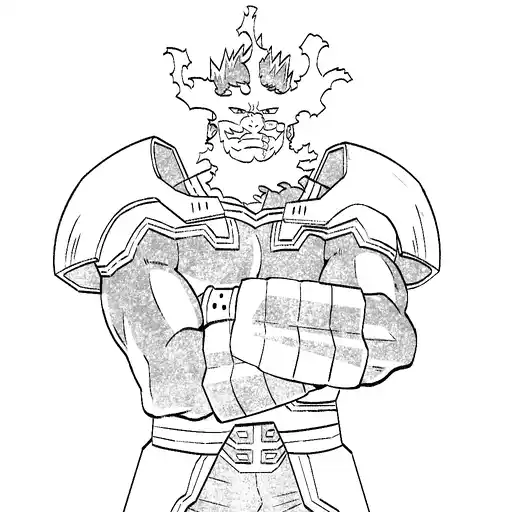Introduction
The world of anime has witnessed numerous groundbreaking series, but few have captured the global audience’s imagination quite like “Demon Slayer” (Kimetsu no Yaiba). This anime, with its captivating storyline, breathtaking animation, and deep emotional resonance, has not only redefined the shōnen genre but also left an indelible mark on global pop culture. As it continues to break records and win hearts worldwide, “Demon Slayer” offers a fascinating lens through which we can explore the evolving landscape of anime and its cultural significance.
“Demon Slayer” debuted as a manga in 2016, penned by Koyoharu Gotouge, and quickly gained a dedicated following. However, it was the anime adaptation in 2019 that propelled it to international stardom. With the release of the movie “Demon Slayer: Mugen Train,” which became the highest-grossing film in Japanese history, the franchise cemented its status as a cultural juggernaut. This article delves into the essence of “Demon Slayer,” examining its rise to fame, the elements contributing to its success, and its impact on the global anime landscape.
Background and Context
The Genesis of “Demon Slayer”
“Demon Slayer” emerged during a time when the anime industry was experiencing a renaissance, with increased global accessibility and a surge in high-quality productions. The manga’s initial success can be attributed to its unique blend of traditional Japanese folklore and modern storytelling. Set during the Taisho era, it follows the journey of Tanjiro Kamado, a young boy who becomes a demon slayer to avenge his family and cure his sister Nezuko, who has been turned into a demon.
The anime adaptation, produced by Ufotable, brought the story to life with stunning visuals and meticulous attention to detail. The studio’s use of dynamic camera work and fluid animation set new standards for the industry, enhancing the narrative’s emotional depth and action sequences.
Cultural Resonance and Global Appeal
“Demon Slayer” resonates deeply with audiences due to its universal themes of family, sacrifice, and perseverance. These themes, woven into a narrative rich with cultural references, create a tapestry that appeals to both Japanese and international viewers. The anime’s ability to convey complex emotions through its characters and plot has contributed to its widespread acclaim.
Moreover, the series’ soundtrack, composed by Yuki Kajiura and Go Shiina, complements the visual storytelling with hauntingly beautiful music that enhances the viewing experience. The opening theme, “Gurenge” by LiSA, became an anthem for fans, further solidifying the show’s cultural impact.
Main Insights on “Demon Slayer”
Crafting a Visual Masterpiece
The animation quality of “Demon Slayer” is one of its most celebrated aspects. Ufotable’s dedication to pushing the boundaries of visual storytelling is evident in every frame. The studio’s innovative use of CGI seamlessly integrated with hand-drawn animation creates a mesmerizing aesthetic that captivates viewers. The fight scenes, characterized by intricate choreography and vibrant effects, are particularly noteworthy, elevating the action genre to new heights.
Storytelling that Resonates
At its core, “Demon Slayer” is a tale of resilience and hope. Tanjiro’s unwavering determination to save his sister and his compassion for others, even his enemies, endears him to audiences. Each character is meticulously developed, with personal backstories that add depth and complexity to the narrative. This character-driven storytelling is a hallmark of the series, allowing viewers to form emotional connections with the protagonists and antagonists alike.
The Power of Emotional Engagement
“Demon Slayer” excels in its ability to evoke powerful emotions. The series explores profound themes such as loss, love, and redemption, often presenting morally ambiguous situations that challenge viewers’ perceptions of good and evil. This emotional engagement is further amplified by the voice acting, which brings authenticity and nuance to the characters’ experiences.
A Cultural Phenomenon
The success of “Demon Slayer” extends beyond the screen. The franchise has inspired a plethora of merchandise, from figurines to clothing, contributing to its status as a cultural phenomenon. Additionally, the series has revitalized interest in Japanese culture, with fans exploring traditional customs and history through the lens of the anime.
Breaking Records and Setting Trends
The release of “Demon Slayer: Mugen Train” marked a significant milestone in the franchise’s history. The film shattered box office records, becoming the highest-grossing anime film worldwide. Its success underscores the growing influence of anime in the global entertainment industry and highlights the potential for anime films to compete with mainstream cinema.
Challenges and Opportunities
Navigating Cultural Differences
While “Demon Slayer” has achieved international success, it also faces challenges related to cultural translation. Some elements of the anime, deeply rooted in Japanese folklore and tradition, may not resonate as strongly with global audiences unfamiliar with these cultural nuances. However, this presents an opportunity for cultural exchange and education, as fans seek to understand the context behind the series.
Sustaining Momentum
As with any popular franchise, maintaining momentum is crucial. The creators of “Demon Slayer” must navigate the balance between satisfying existing fans and attracting new audiences. This involves expanding the story universe while preserving the core elements that made the series successful.
Leveraging Technological Advancements
The anime industry is continually evolving, with advancements in technology offering new possibilities for storytelling. “Demon Slayer” can capitalize on these innovations to enhance its visual and narrative capabilities, ensuring that future installments continue to captivate audiences.
Future Outlook
The Next Chapter for “Demon Slayer”
The future of “Demon Slayer” looks promising, with new seasons and potential spin-offs on the horizon. As the franchise continues to evolve, it has the opportunity to explore new storylines and character arcs, expanding its universe and deepening its cultural impact.
The Broader Impact on Anime
“Demon Slayer” has set a new benchmark for anime, influencing both creators and audiences. Its success has paved the way for other anime series to gain international recognition, contributing to the genre’s growing prominence in the global entertainment landscape. As anime continues to gain traction, “Demon Slayer” will undoubtedly serve as a reference point for future productions.
Conclusion
“Demon Slayer” is more than just an anime; it is a cultural phenomenon that has reshaped perceptions of the medium. Its compelling storytelling, stunning visuals, and emotional depth have resonated with audiences worldwide, solidifying its place in the annals of anime history. As the franchise continues to grow, it offers a testament to the power of anime to transcend cultural boundaries and unite fans across the globe.
For those new to anime or long-time enthusiasts, “Demon Slayer” represents a must-watch experience that encapsulates the essence of what makes anime a unique and influential art form. As we look to the future, the series promises to continue inspiring and entertaining audiences, leaving an indelible mark on the world of animation.





